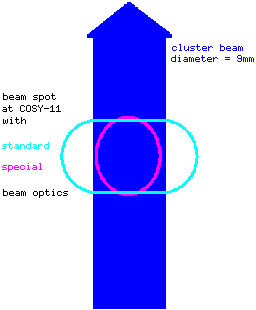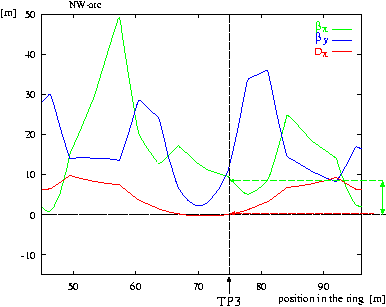
An experiment which has to deal with very small reaction cross sections is forced to provide the maximum lumionosity it can get. The luminosity L (reaction probability) is given by
L = n(beam) × n(target) × f × o
n(beam/target) is the numbers of the protons in the beam/target and f the revolution frequency of the beam protons. The last factor o denotes the overlap of the beam and the target. The aim is to reach o=100%.
The horizontal size of the beam spot x, the area where the beam particles pass the target region, is given by four parameters, two machine and two beam parameters. For the beam there is
x = 2 × sqrt( e × beta_x(s) + D_x(s)**2 × (dp/p)**2 )
and for the vertical direction where no dispersion effects holdy = 2 × sqrt( e × beta_y(s) )
The beam parameters e and dp/p can be decreased by beam cooling (electron, stochastic), the machine parameters by calculating a special beam optics. That means varying the strength of the 24 quadrupoles in the arcs of the ring, which are combined in 6 families with alternating focussing and defocussing quadrupoles.
Thus COSY-11 gets a magnet setting where the dispersion at the position of the target drops to zero and the beam size is only ruled by the beta function which is also decreased. The final beam spot is smaller than the target width which results in a 100% overlap.